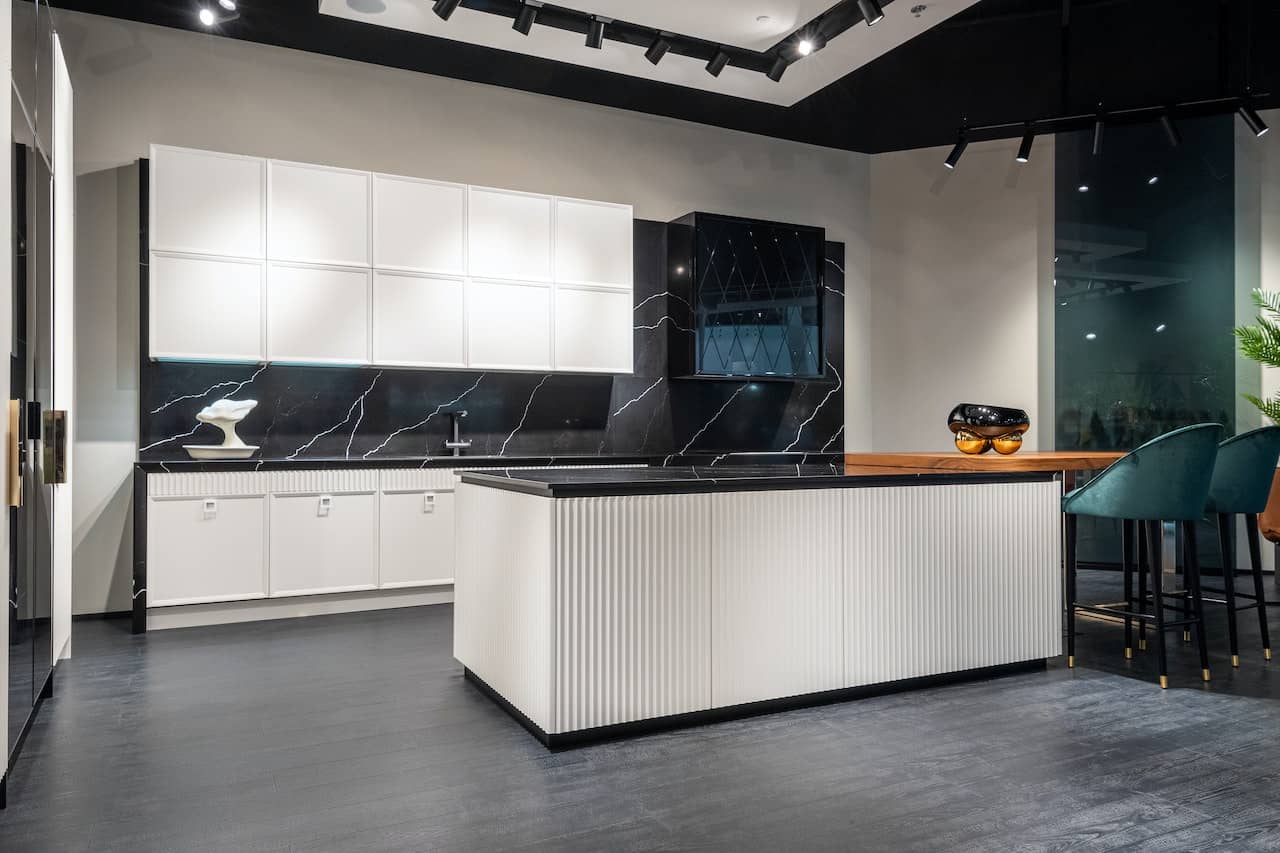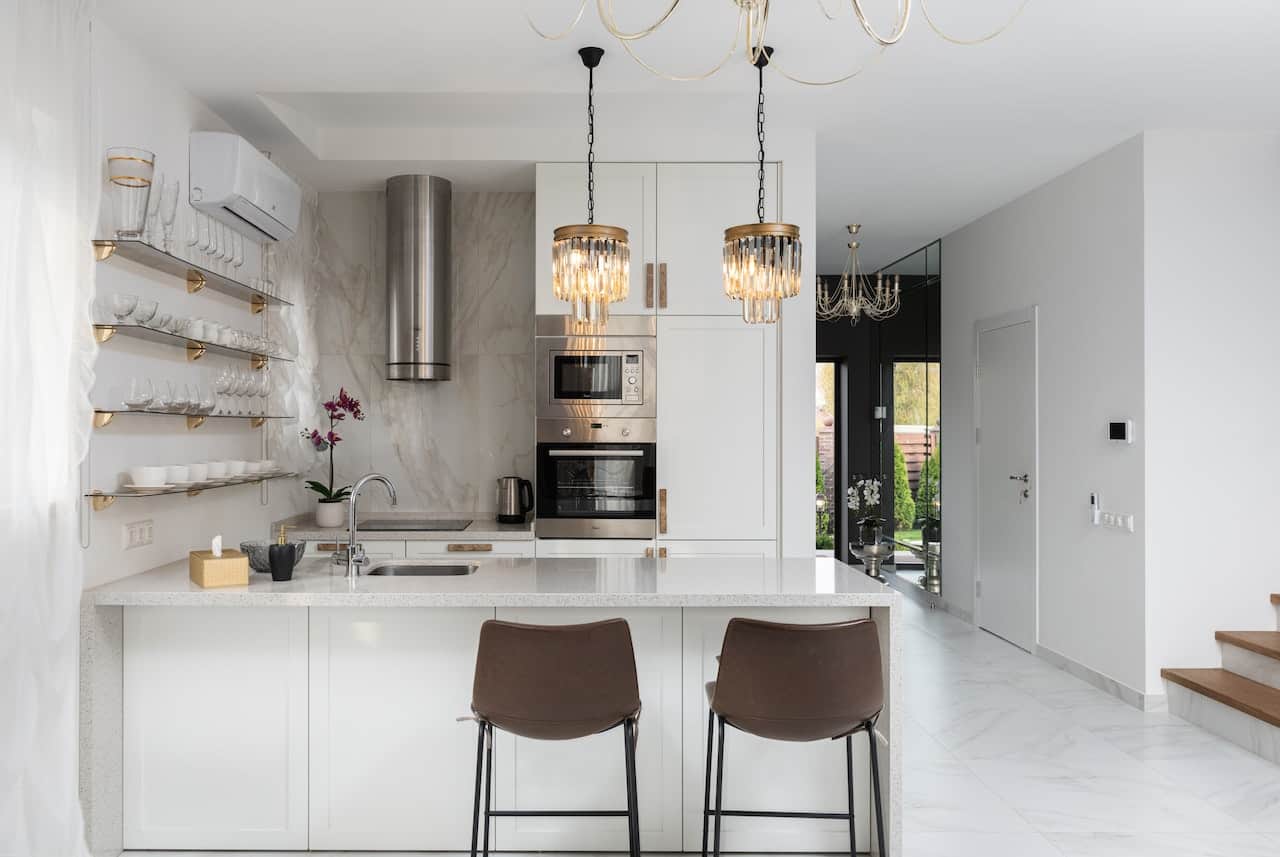Marble stone is one of the most luxurious and elegant looking materials used in internal and external home construction. While often used on its own in kitchen design, marble can be mixed with a variety of other materials to create unique effects.
Whether you love the look of marble and granite or want to explore a black and gold marble kitchen, there are plenty of options that look as fantastic as they function.
Using Marble in the Kitchen
Thanks to both its durability and versatility, marble can and is used in a variety of ways in kitchen designs. Some of the most popular applications of marble include the following:
Kitchen Countertops
The countertop or benchtop in a kitchen is not just the centre of activity but the centre of the entire design aesthetic. Marble countertops are popular thanks to their hardiness and heat resistance. With proper sealing, they can last for many years and look as good as new while doing so.
Kitchen Islands
The kitchen island is becoming an increasingly common option in home kitchen design. This type of countertop can be customised in many unique ways, but always looks an absolute treat when made from marble stone.
Backsplashes
The kitchen backsplash is fundamentally a practical addition but when made from marble can still add sophisticated design and an elegant aesthetic to the entire space.
Flooring
Marble flooring is popular not just in the kitchen but throughout the home. The durability of marble makes it ideal for areas that are prone to high foot traffic, such as a kitchen. Plus, this gorgeous stone can be enjoyed in all of its beauty when applied across a kitchen floor.
Accent Pieces
Sometimes it’s the smaller applications of marble that can have the greatest of impacts. Using marble in accent pieces in the kitchen, think serving trays, vases or even cutting boards, can go a long way to infusing style and beauty into your home.
Options for Mixing Marble In Your Kitchen
Marble and Granite
Both marble and granite are natural stone materials and to that end they complement each other beautifully. Like marble, granite is highly durable and resistant to heat and scratches. The granular texture of this natural stone perfectly balances out the elegant simplicity of marble.
With a lot of colours in either stone being available, you can mix and match marble and granite to achieve a subtle and minimalist style, or opt for a striking contrast through white marble and black granite to add depth and layers to your kitchen.
Marble Black and Gold Kitchen
Another way to truly highlight the aesthetic glory of marble is to mix it with black and gold. The combination of marble, black and gold not only looks luxurious but it offers a lot of opportunity to creatively play with different shades and styles.
For example, consider a marble kitchen countertop surrounded by black cabinetry and fixtures. Then add in golden accents, such as lighting, faucets and hardware, and you’ll have a wonderfully complex yet not overwhelming kitchen that shouts luxury and sophistication. There are many ways of creating a marble, black and gold kitchen depending on your preferences.
Dark Wood and Marble Kitchen
A dark wood and marble kitchen is another fantastic combination to achieve the warmth of darker shading with the rich luxuriousness of light marble. The combination of wood and stone provides a soft yet impactful material contrast that can be played around with in various applications.
Dark wood kitchen flooring and/or cabinetry can be paired with a marble countertop or backsplash to great effect. In fact, the marble in this design style can be either lighter or darker, depending on your needs.
Dark wood and marble kitchens are particularly versatile in overall interior designs, being perfectly suitable for both modern and traditional aesthetics.
Concrete and Marble Kitchen
The industrial aesthetic of concrete is gaining in popularity. However, there’s no need to miss out on the joys of marble! Combining concrete with the elegant look of marble captures the perfect synthesis of modern and industrial looks.
Contrasting these differing textures and materials can be done in many ways. Either a marble backsplash with a concrete countertop or vice versa could work well. There’s also plenty of flexibility in colour and shading in a concrete and marble kitchen, with marble stone available in a wide variety of different aesthetics.
Black and Marble Kitchen
A black and marble kitchen takes luxury interior design to a whole new level. Dark and atmospheric cabinetry (or fixtures) can create a truly bold and dramatic look in a kitchen. Pair that with the softer aesthetic of white (or off-white) marble and you’ll enjoy a gorgeous visual balance.
Black and marble kitchens also offer a lot of scope for personal preferences and customisation. Whether you opt with black cabinetry for example or for a more charcoal/dark grey option is up to you. Similarly even white marble comes in various shades and with a variety of different grey veining patterns. Mix and match with the different shades of black and marble until you find the winning combination for you.
Copper and Marble Kitchen
Trendy, stylish and versatile, it’s not hard to understand why a copper and marble kitchen is becoming more and more popular. Copper accents, whether its lighting or fixtures, perfectly complement a marble countertop or backsplash.
While some might find all white kitchens to be a tad too minimalist for their liking, infusing an element such as copper can transform even the coldest of kitchens into something that feels invitingly warm.
If you love the modern aesthetic in your home design, the copper and marble kitchen is a wonderful option.
Let’s mix up your kitchen with marble today!
Mixing marble with other materials, colours and styles can be beautiful, functional and unique. There are a lot of options out there depending on the overall design you’re trying to achieve, your personal preferences and even the layout of your current kitchen.
Thanks to the timeless quality and luxury aesthetic of marble stone, it’s easy to find a variety of other materials that wonderfully complement it.
If you’re interested in starting to experiment and mix marble with other materials for your new kitchen, give the Euro Marble team a call today!










